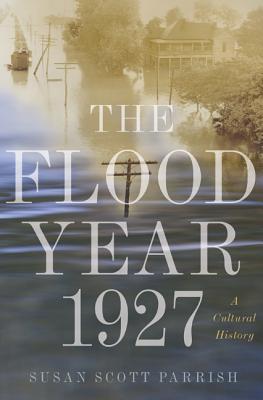

 Princeton University Press
Princeton University Press
The Flood Year 1927: A Cultural History


Key Metrics
- Susan Scott Parrish
- Princeton University Press
- Hardcover
- 9780691168838
- 9.3 X 6.3 X 1.3 inches
- 1.6 pounds
- History > United States - 20th Century
- English
 Secure Transaction
Secure TransactionBook Description
A richly nuanced cultural history of the Great Mississippi flood
The Great Mississippi Flood of 1927, which covered nearly thirty thousand square miles across seven states, was the most destructive river flood in U.S. history. Due to the speed of new media and the slow progress of the flood, this was the first environmental disaster to be experienced on a mass scale. As it moved from north to south down an environmentally and technologically altered valley, inundating plantations and displacing more than half a million people, the flood provoked an intense and lasting cultural response. The Flood Year 1927 draws from newspapers, radio broadcasts, political cartoons, vaudeville, blues songs, poetry, and fiction to show how this event took on public meanings.
Americans at first seemed united in what Herbert Hoover called a great relief machine, but deep rifts soon arose. Southerners, pointing to faulty federal levee design, decried the attack of Yankee water. The condition of African American evacuees in concentration camps prompted pundits like W.E.B. Du Bois and Ida B. Wells to warn of the return of slavery to Dixie. And environmentalists like Gifford Pinchot called the flood the most colossal blunder in civilized history. Susan Scott Parrish examines how these and other key figures--from entertainers Will Rogers, Miller & Lyles, and Bessie Smith to authors Sterling Brown, William Faulkner, and Richard Wright--shaped public awareness and collective memory of the event.
The crises of this period that usually dominate historical accounts are war and financial collapse, but The Flood Year 1927 enables us to assess how mediated environmental disasters became central to modern consciousness.
Author Bio
I am a Professor in the Department of English and the Program in the Environment at the University of Michigan, and Arthur F. Thurnau Professor. I began my career in the 1990s as a cultural historian of the British Atlantic world, with a focus on American plantation zones, and a particular interest in how American nature and American races were co-constructed in the 17th and 18th centuries through scientific networks.
Retaining my interests in the nature/race/knowledge bundle, but increasingly attending to environmental history, I turned my attention to a 20th-century ecocatastrophe in the US cotton kingdom of the Lower Mississippi Valley. Most recently, I have been focusing on contemporary fiction, film and photography to see how this long history of the plantation, and especially Black connections with, and alienations from, the natural world are being imagined by artists today.
I have served on the editorial boards of American Literature, Early American Literature, the Winterthur Portfolio, and have just joined The Faulkner Journal. I have been a council member at the Omohundro Institute of Early American History and Culture, have served on the Executive Committee of the MLA’s “American Literature to 1800” Division, and been elected as a member of the American Antiquarian Society.
Closer to home, I have served as a Director of Undergraduate Studies in English, and as its Associate Chair. I began a new role as Chair of the Michigan Society of Fellows in January 2021.
Source: University of Michigan
Videos


Community reviews
Write a ReviewNo Community reviews